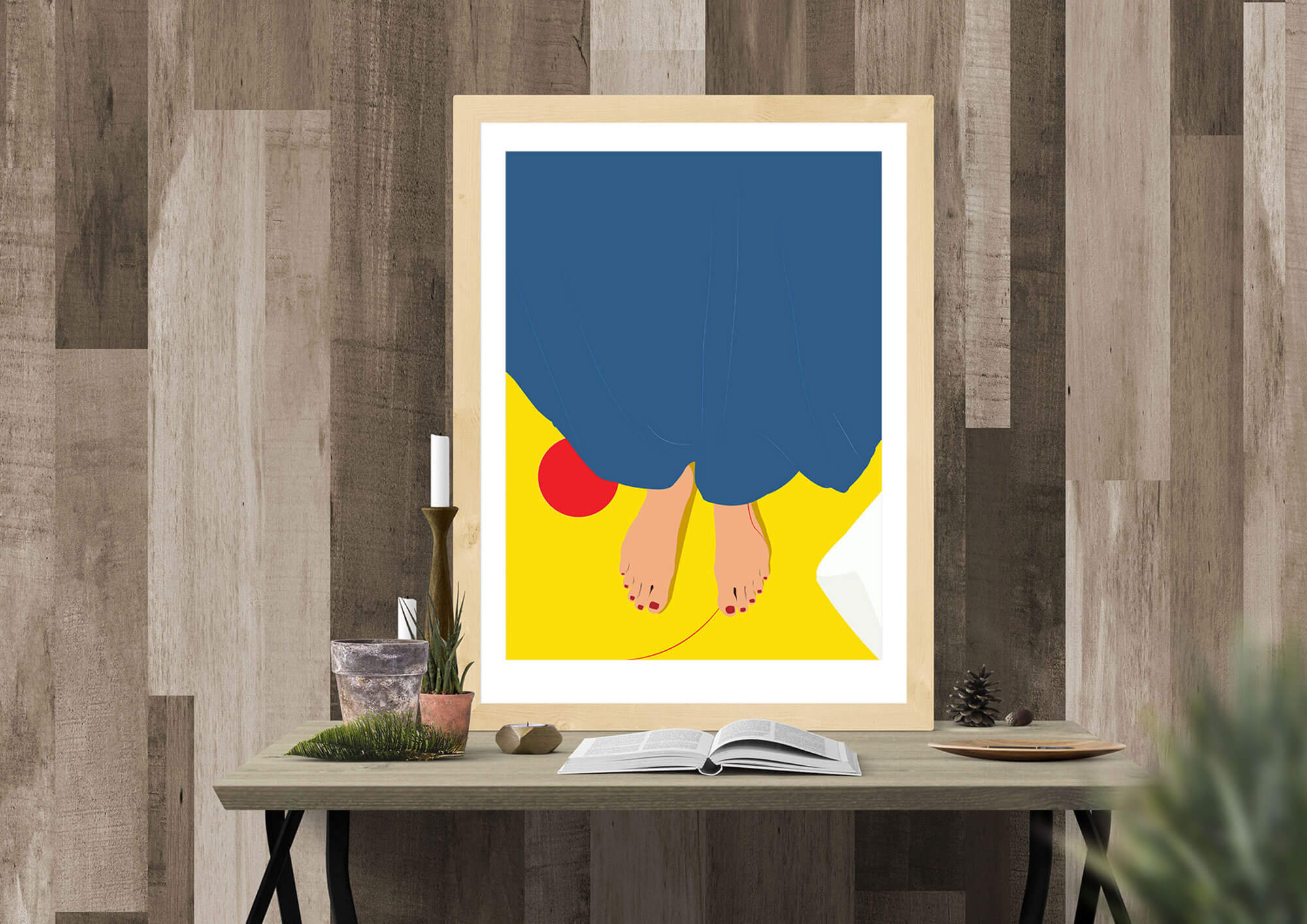
This work was initially part of the Kobba creative phase but was left out of the final collection.
In line with the Kobba theme, this artwork focuses on a connecting red thread being stamped upon by the figure in subject. The helpless viewer in close proximity watches over, questions and contemplates this gesture in a state of drunkenness.
The title of the work refers to a song by Diodato.
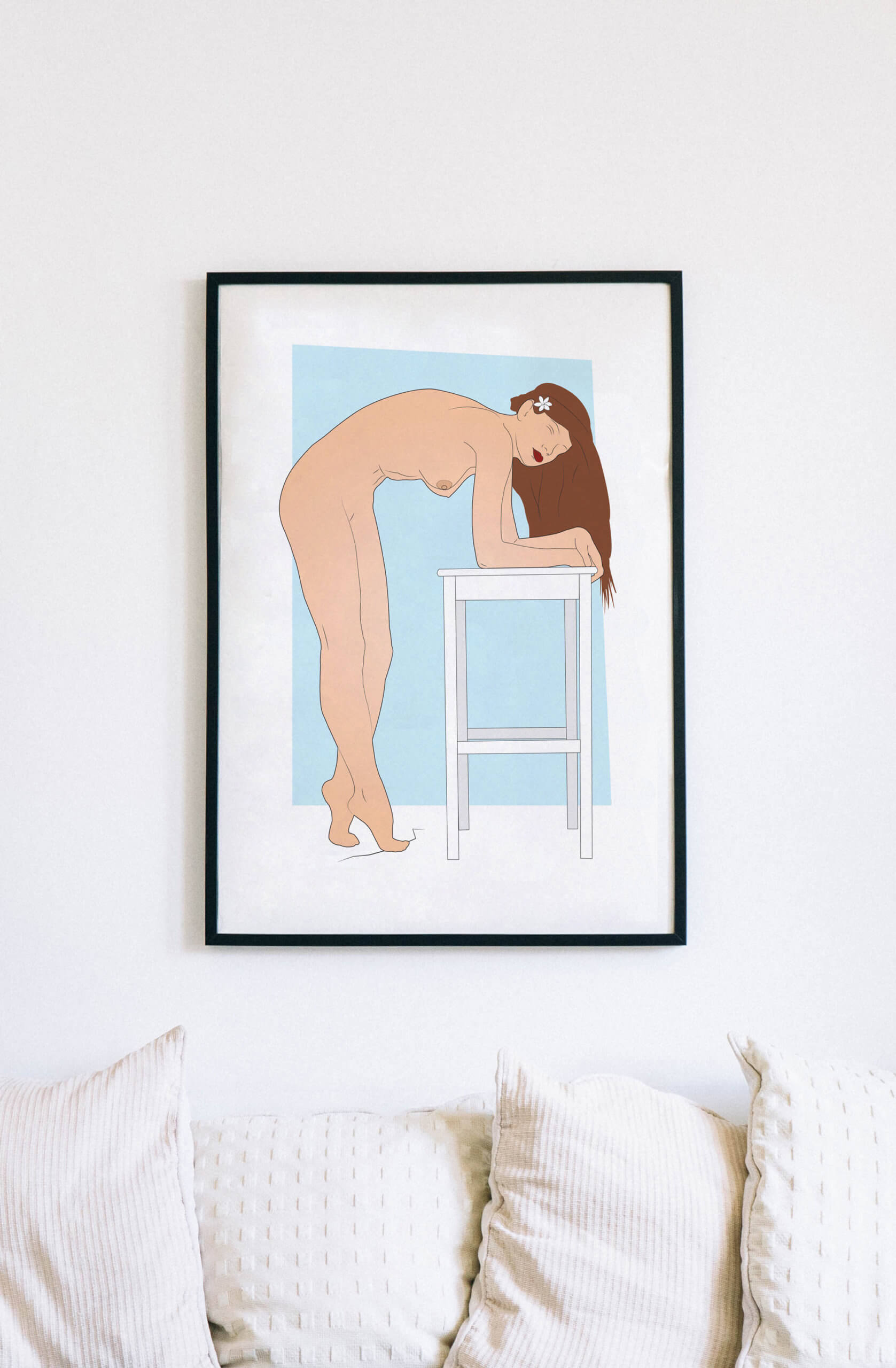
This was part of an initiative by 24 Art Collective – an improvised collective of designers, photographers, illustrators and typographers who joined efforts and created limited edition artworks in reaction to the earthquake at Acumuli and Amatrice (IT) that took place on August 24, 2016. All proceeds from the sales of these prints were meant to go towards a fund set up by SOS Malta for the areas affected, yet the project took long to be launched and eventually dissolved. Any sales of this artwork will still be donated to SOS Malta.
Anemone symbolizes the grief around Acumuli and Amatrice as these two communities cried the deaths of around 290 people. Hope is here depicted as a nude female who rests on solid structure, whilst stepping on the crevasse of the 24/08 earthquake. Adorning her hair is an Anemone flower; which is also a metaphor of excitement for a prosperous future and the arrival of the first spring winds.

A commissioned portrait of Marouska Farrugia.

Portrait of Sabrina Calleja Jackson of Birżebbuġa

This work was one of the precursors for the Kobba concept and its creative phase but was left out of the final collection. In line with the concept behind Kobba, it raises questions about attachments, intimacy and relationships with the self and beyond.
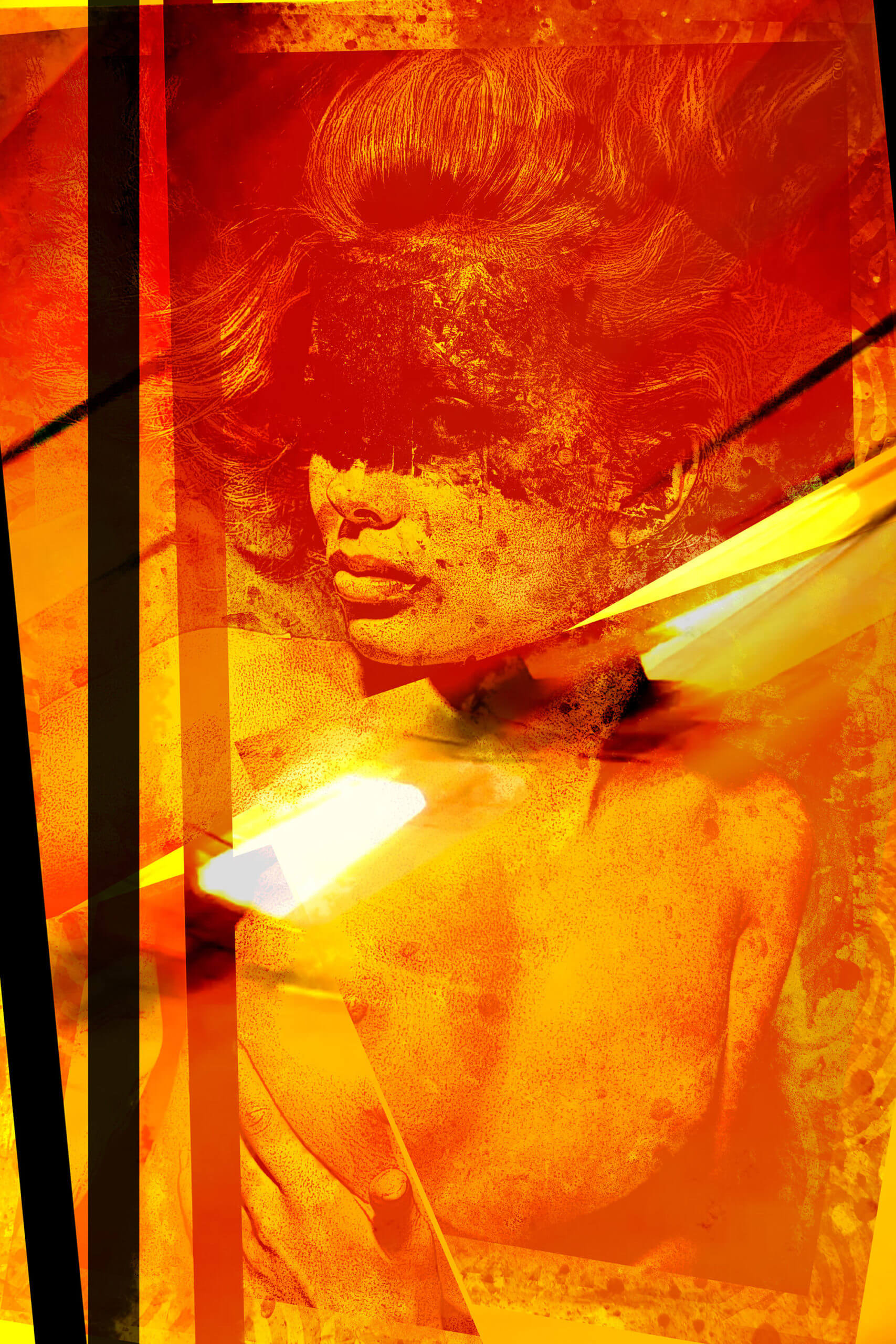
Appropriation art usually takes a recognisable object, text or image and re-contextualizes it. The Her Majesty anthology is composed through the skill of eye/hand co-ordination; the results of immediate copies of reality through the photographic and the scanned; through the physical and digital gestural interventions of colour; and through the simulations of scrubbing or mixing of paint. Such undertakings are kept in a ‘fresh’ state of flux through the integration of manual processes of painting, colouring and mark-making on the print, but also particularly through digital software. The digital paintings directly convey paradoxical messages of the sacred and the profane; intimacy and withdrawal; stillness and movement; aggression and playfulness; lust and spirituality. The colour palette is likewise contrasting from warm reddish oranges tones that are associated with passion and desire to monochromes that turn thrilling excitement into bitter loneliness and aching pain. The title itself is also very allusive and brings forth the themes of the feminine, power and subordination.
The gaze in these works does not seek the erotic as much as eros itself. The digital art works suggest that transcendence is only possible through the primitive instinctual bareness of the body. The desire for the flesh becomes a soulful yearning for the soul to meets itself through the other. In the liminal space of cyberspace a meditation on internet culled imagery of nude women is made. The artist goes into reverie as the Web helps him create his own altered sense of consciousness where he can tap into himself. The artist tries to gain some sort of control over a virtual landscape which seems to elude him. Appropriating found female anonymous images from the internet into elaborate evocative figures; he brings to life new images from images. This helps in closing off that sense of abjection and to make contact with the departed. Digital art becomes a mediumistic tool to seance with what is no longer present.
Note: This description was composed from the academic reviews by Dr. Vince Briffa and Dr. Laner Cassar
A soundscape created through the reading of some of the artist’s poems was created by SeeSaw Sounds to feature as a background element during the exhibition period. Readers were Yasmin Kuymizakis, Martha Vassallo and the artist himself. The complete production can be heard here.
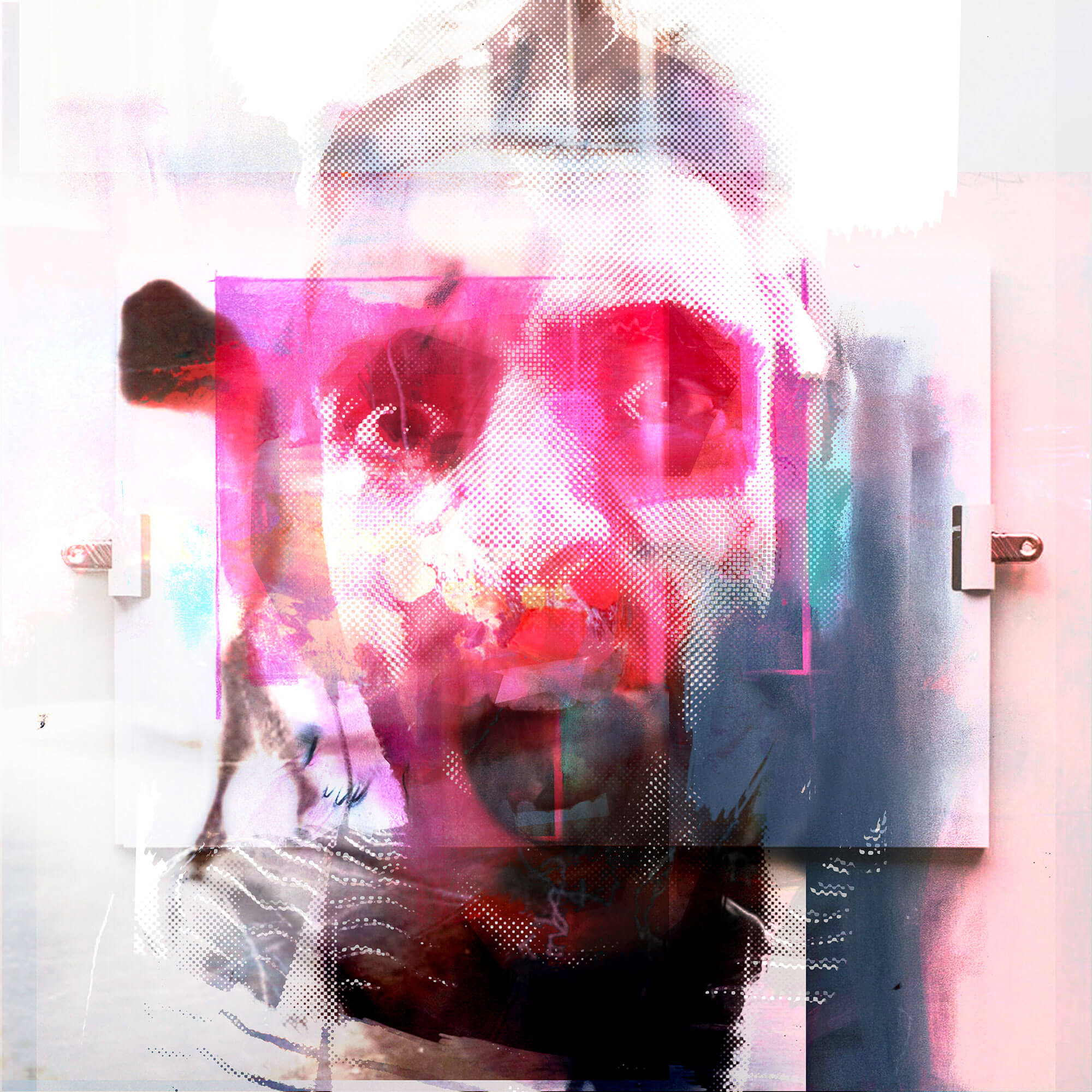
Each work is a contemplation about life, beginnings, ends and what’s in between.
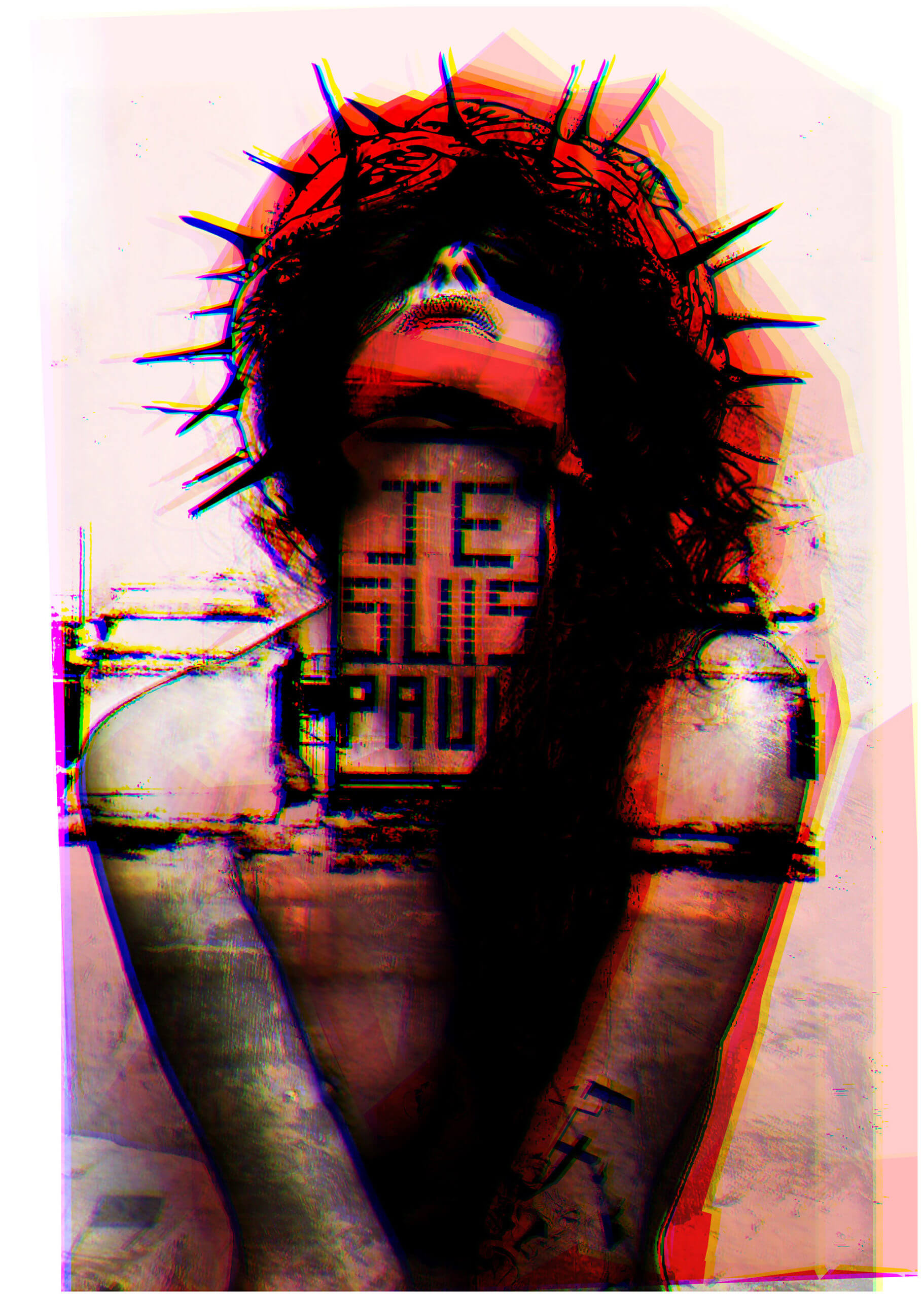
Je Suis is a compelling set of digital collages produced in February/March 2015 that invite viewers to explore the intersection of gender, identity, and spirituality through striking visual narratives. Three female figures take center stage in these thought-provoking compositions, each embodying a tragic iconography reminiscent of Christian rituals and symbolism.
The title “Ecce Homo” draws parallels to the solemnity of the Passion of Christ, prompting viewers to question the societal constructs that define and confine the individuals depicted. The use of Christian references, such as the crown of thorns, evokes themes of suffering and sacrifice, challenging the status quo behind the person being represented.
“Salve Regina” delves into the delicate balance between holiness and mundanity, questioning the notion of what makes someone holy or revered. The collages compel viewers to contemplate the standards and expectations imposed on individuals, particularly women, in society.
In “Je Suis Paul,” the artist’s personal crisis of identity takes center stage. By reclaiming his original legal name Paul, the artwork confronts the thorns that punctuate life’s journey, exploring the challenges of self-discovery and self-acceptance. It serves as a powerful reminder of the importance of introspection and authenticity in an ever-evolving world.
The triptych culminates in a forth piece: “Je Suis Pawlu,” a concluding self-portrait. The artist, wearing headphones and facing the viewer, invites us to reflect on our own identities and the need to listen to ourselves amidst the cacophony of external influences. It symbolizes the ongoing journey of self-discovery and the pursuit of a genuine sense of self.

Inspired by Carmen Consoli’s track “Vorrei Dire” from her album Due Parole, this portrait is an intense manifestation of the need to speak out and be listened.














